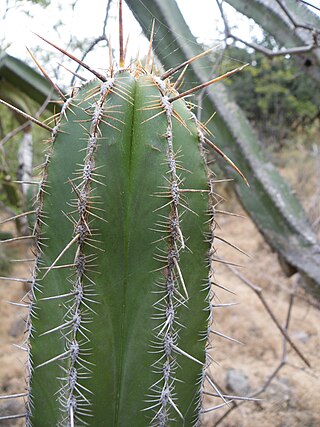
Escontria is a genus of cactus. The only species is Escontria chiotilla, the chiotilla or jiotilla.
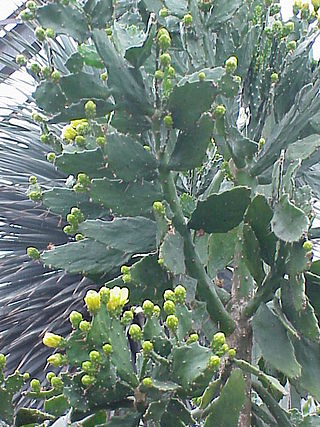
Brasiliopuntia is a genus in the cactus family, Cactaceae. It contains only one species, Brasiliopuntia brasiliensis.

Arthrocereus glaziovii is a species of plant in the family Cactaceae. It is endemic to Brazil. Its natural habitat is rocky areas. It is threatened by habitat loss.

Cleistocactus hyalacanthus is a species of columnar cacti in the genus Cleistocactus. The name comes from the Greek kleistos meaning closed because the flowers hardly open.

Cleistocactus tominensis is a species of columnar cactus in the genus Cleistocactus, endemic to Bolivia, where it is found in forests, on cliffs, and in inter-Andean valleys at altitudes of 900 to 2,200 meters.

Soehrensia thelegona is a species of cactus in the Soehrensia genus.

Acanthocalycium spiniflorum is a species of flowering plant in the cactus family Cactaceae from Argentina.

Weberbauerocereus weberbaueri is a species of Weberbauerocereus from Peru.

Cereus phatnospermus, synonym Cereus kroenleinii, is a species of columnar cactus found in Brazil, Bolivia, and Paraguay.

Cereus stenogonus, also known as narrow-angled cereus, is a species of Cereus found in Bolivia, Paraguay and Argentina.

Acanthocalycium rhodotrichum is a species of Acanthocalycium found in Argentina, Bolivia, Brazil, Paraguay, and Uruguay

Cleistocactus baumannii is a species of Cleistocactus found in Argentina, Paraguay, Bolivia, Uruguay, and Brazil.

Cleistocactus brookeae is a species of columnar cacti in the genus Cleistocactus.
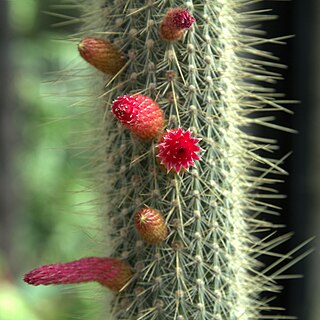
Cleistocactus parviflorus is a species of columnar cacti in the genus Cleistocactus.
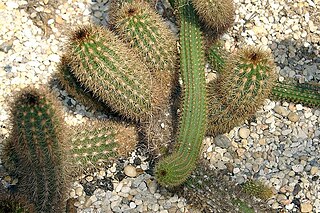
Haageocereus acranthus is a species of Haageocereus found in Peru.

Oroya peruviana is a species of cacti, originating from Peru
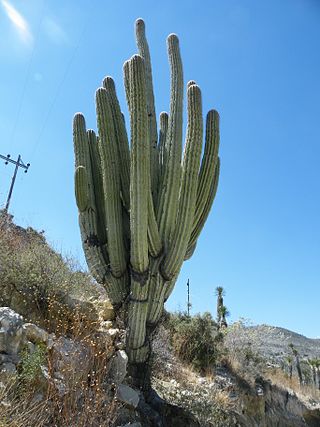
Cephalocereus fulviceps is a species of Cephalocereus from Mexico.

Cephalocereus macrocephalus, synonym Neobuxbaumia macrocephala, is a species of cactus endemic to Mexico.
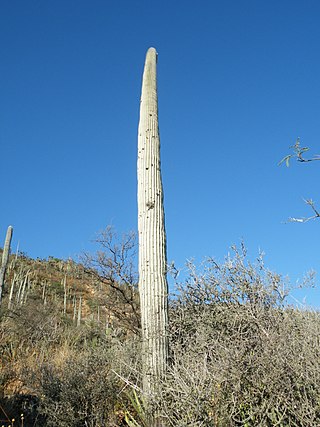
Cephalocereus columna-trajani is a species of cactus from Mexico.

Borzicactus sepium is a species of Borzicactus found in Ecuador.





















